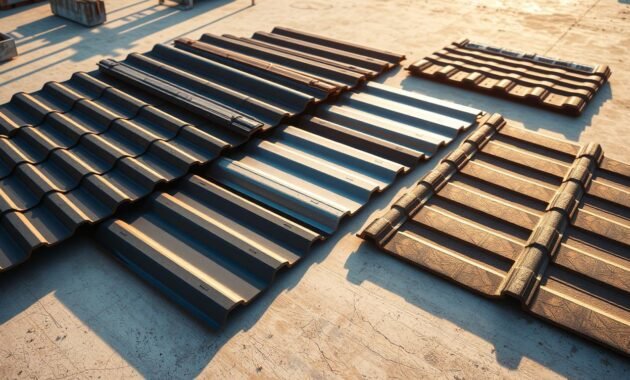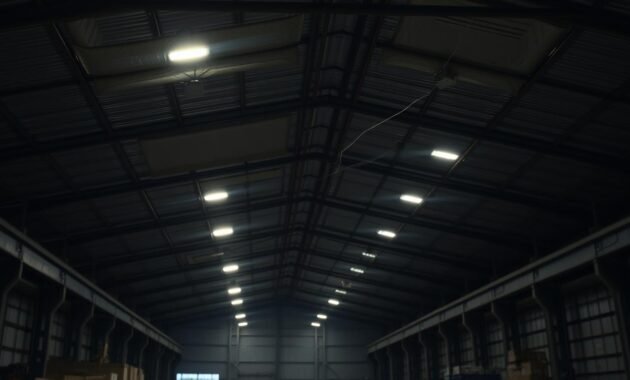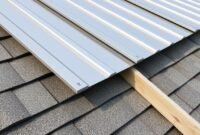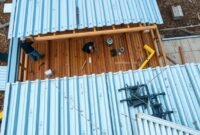Thinking about getting a metal roof for your home? They’re known for being durable and saving energy. But, they also have big downsides that homeowners need to know. These can turn a good idea into a bad choice.
Metal roofs cost a lot more than regular asphalt shingles. The good and bad of metal roofs go beyond just money. Things like hard installation and noise can be big issues.
I’ll show you the main problems you might face. This will help you decide if a metal roof is right for your home. Knowing these issues can help you avoid big problems and costs later on.
Read also: Mobile Home Metal Roof Vent
Understanding Metal Roof Systems and Their Types
Metal roofs are a top choice for boosting your home’s curb appeal. They offer unique benefits that set them apart. Let’s dive into the key details about metal roofing systems to guide your decision.
Metal roofing comes in two main types, each with its own strengths. Unlike asphalt shingle roofs, metal roofs last longer and perform better.
Standing Seam Metal Roofs
Standing seam metal roofs are the top choice for homes. They have:
- Concealed fasteners for better weather protection
- Great flexibility in changing weather
- A sleek look that increases your home’s value
- A lifespan of 40-75 years
Screw Down Panel Roofs
Screw down panel roofs are perfect for non-residential areas like:
- Barns
- Carports
- Agricultural buildings
- Industrial structures
Material Options Available
There are many materials for metal roofing, each with its own benefits:
- Steel: The most budget-friendly choice
- Aluminum: Light and resistant to corrosion
- Copper: A premium option with long life
- Zinc: Very durable, lasting 80-100 years
Choosing the right metal roofing depends on your needs, budget, and style. Knowing these options will help you invest wisely in your home’s safety and looks.
The Cost Factor: Investment vs Long-term Value

Thinking about getting a metal roof? It’s a big financial step. The cost is higher than asphalt roofs at first. But, the long-term gains are worth it. Let’s look at the money side of metal roof installation.
Metal roofs start at $12 to $13 per square foot. For a typical house, it’s $18,000 to $26,000. Asphalt shingles are cheaper, at $4.25 to $8.25 per square foot. But, metal roofs offer more value over time.
- Metal roofs can last 40 to 100 years
- Potential energy savings up to $1.11 per square foot
- Cooling cost reduction of 25-40%
- Most metal roofs come with a 50-year warranty
One big drawback is the high initial cost. Labor can be up to 60% of the total price. But, metal roofs are durable and save on energy, making them a smart choice in the long run.
Here are the financial benefits:
- Lower maintenance costs
- Increased home value
- Superior energy efficiency
- Longer lifespan compared to traditional roofing
See metal roofing as a long-term investment, not just a quick expense. It can save you money on energy, needs little upkeep, and lasts longer. It’s a good choice for those ready to invest now.
Disadvantages of Metal Roofs: Key Concerns to Consider
Metal roofs have unique challenges that homeowners should think about before choosing. They are very durable but have specific issues compared to asphalt shingles and wood shakes.
Installation Complexity
Putting up a metal roof needs special skills and care. It’s not like installing asphalt shingles. Experts must align panels right, fasten them correctly, and handle thermal expansion. If done wrong, it can cause big problems like:
- Water getting in
- Materials wearing out too soon
- Roof not working well
Maintenance Requirements
Metal roofs need regular checks to avoid issues. It’s not a “set it and forget it” option. Important maintenance tasks include:
| Maintenance Task | Frequency | Potential Issue |
|---|---|---|
| Fastener Check | Every 5 years | Prevent leaks |
| Surface Coating Inspection | Annually | Stop corrosion |
| Sealant Evaluation | Every 3-4 years | Keep water out |
Aesthetic Limitations
Even with modern metal roofing, choices are limited compared to wood shakes or asphalt shingles. Some issues include:
- Potential for “oil canning” – a wavy look in metal panels
- Few color and texture options
- Less traditional look
Knowing these downsides helps homeowners decide if a metal roof is right for them.
Noise Issues and Sound Management
When thinking about metal roofs, noise is a big worry for many homeowners. Traditional asphalt roofs usually block more sound than metal roofs. During storms, metal roofs can make a lot of noise, disturbing your home’s peace.

- Install strong attic insulation to block sound
- Use sound-dampening underlayment materials
- Choose thicker metal panels to cut down on sound
- Use professional sound-absorption methods during installation
Studies show that good insulation can cut sound levels by 30-50%. In bad weather, like hailstorms, metal roofs can be very loud, reaching 100 decibels. This loudness makes it important to plan well if you’re thinking about metal roofing.
Even though metal roofs can be noisy, new installation methods have greatly improved sound control. Today, roofers use advanced insulation to lessen sound problems. This makes metal roofs more appealing to those who want strong and effective roofs.
Durability Challenges: Denting and Weather Impact
Metal roofs are tough, but they can’t withstand everything. They last a long time, but weather and physical damage can be tough on them.
It’s important to know what metal roofs can face. Different materials handle weather and damage in different ways.
Impact from Hail and Falling Objects
Not all metal roofs are the same when it comes to taking a hit. Softer metals like aluminum and copper are more likely to get damaged:
- Hailstones can create dents in softer metal surfaces
- Falling branches may cause significant surface damage
- Larger hailstones increase the risk of roof damage
Hail can dent or scratch metal roofs, with softer metals being more at risk. About 15% of metal roofs show damage from weather.
Expansion and Contraction Issues
Changes in temperature can be a problem for metal roofs. The metal expands and contracts, which can lead to issues:
| Issue | Potential Consequences |
|---|---|
| Thermal Movement | Loose fasteners |
| Repeated Expansion/Contraction | Seam separation |
| Improper Installation | Up to 20% risk of structural issues |
Getting your roof installed right is key to avoiding these problems. Homeowners should hire experts who know how to handle metal roofs.
Comparing Metal Roofs to Traditional Roofing Materials
Choosing a metal roof means weighing its pros against traditional asphalt shingles. The roofing market has its own set of advantages and disadvantages for each material. This makes the decision more than just picking the cheapest option.
Let’s look at the main differences between metal roofs and asphalt shingles:
| Feature | Metal Roofs | Asphalt Shingles |
|---|---|---|
| Lifespan | 40-70 years | 12-20 years |
| Installation Cost | $15-$60 per square foot | $3-$20 per square foot |
| Energy Efficiency | Up to 40% cooling cost savings | Limited energy benefits |
| Resale Value Impact | 6% increase | Minimal impact |
Read also: How to Install a Metal Roof over Shingles Furring Strips
Cost Comparison Analysis
Metal roofs cost more upfront than asphalt shingles. But, the long-term savings can make up for the higher initial cost:
- Reduced maintenance costs
- Lower energy bills
- Potential insurance discounts
- Increased home value
Metal roofs also have an environmental edge. They contain at least 25% recycled material and are fully recyclable. This makes them a great choice for those who care about the planet.
Installation and Maintenance Considerations
Getting a metal roof means you need to plan carefully and hire a pro. Metal roofs are different from others because they need special skills and exact installation. I’ve found that installing a metal roof is more complex than most DIY projects.
Homeowners should know a few key things about metal roof installation:
- Specialized contractor expertise is essential
- Professional tools and techniques are mandatory
- Precise measurements and alignment are critical
- Understanding thermal expansion characteristics is vital
Metal roofs need regular maintenance, not just because they’re durable. They should get professional checks and care often. I suggest getting an annual inspection to keep them in top shape.
| Maintenance Aspect | Recommended Frequency | Key Considerations |
|---|---|---|
| Visual Inspection | Annually | Check for loose fasteners, possible rust spots |
| Professional Evaluation | Every 2-3 years | Full check of roof condition |
| Cleaning | As needed | Clear debris, avoid water buildup |
The cost of a metal roof might seem high at first. But, it’s worth it in the long run. Metal roofs can last 40-70 years, unlike asphalt shingles that last 10-20 years. This means you need to invest in proper installation and upkeep to get the most out of your roof.
Knowing how metal roofs work helps homeowners make smart choices. With the right installation and regular care, your metal roof will protect your home for many years.
Conclusion
Exploring metal roofing’s pros and cons shows it’s not an easy choice. The costs can be high, from $8,000 to $25,000. Homeowners also face issues like noise and dents.
Despite its benefits, like saving energy and lasting long, metal roofs have big downsides. They cost more than asphalt shingles, which are cheaper. But, they might last longer, which could make the extra cost worth it.
Weather and local conditions are key when deciding on a metal roof. In hot areas, they can save a lot on cooling costs. But, in places with harsh weather, they might be more durable. Yet, they can be noisy, expand, and have limited looks.
Choosing the right roof is a personal decision. It depends on your budget, needs, and future plans for your home. Knowing all the pros and cons helps you pick the best option for your home.




